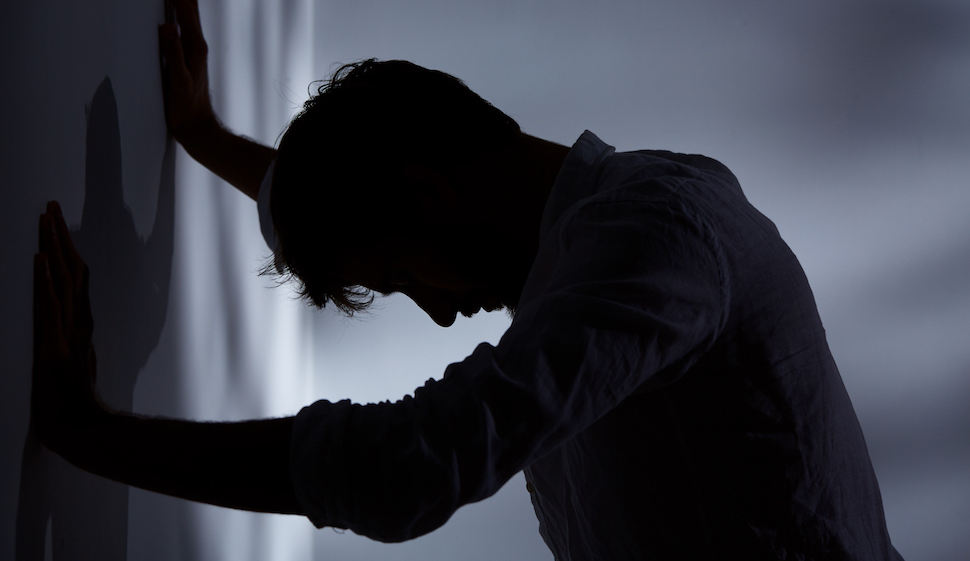
Psychotic Disorders
Psychosis is a break with reality that can manifest as hallucinations or delusions where a person imagines, sees, hears or even tastes things that aren’t real. Psychotic disorders are mental health conditions in which psychosis is a feature, and is most likely to occur in people who have schizophrenia, bipolar disorder, dementia, or substance use disorders. Certain medications, substances or underlying illnesses like stroke or brain injury can sometimes trigger psychosis, causing a “psychotic break” in people who do not have a psychotic disorder.
What is a Psychotic Disorder?
There are several types of psychotic disorders (also known as thought disorders), including schizophrenia, schizoaffective disorder, schizotypal personality disorder, schizophreniform disorder, and major depression with psychotic features.
There are also other mental health disorders where different types of psychosis can occur as a symptom.
If psychosis is associated with a thought disorder, the first episode of psychosis usually occurs in the teen years or early adulthood.
Drugs such as cocaine, PCP, amphetamines, meth, and cannabis, among others, can cause substance-induced psychosis similar to the episodes experienced by people with a psychotic disorder like schizoaffective disorder. Research shows a higher prevalence of psychotic episodes among drug users as compared to the general population, but more studies are needed to determine whether drugs increase the risk of psychosis or if individuals with a history of psychosis are more likely to use drugs. In some cases, there is a co-occurring psychiatric condition that is causing the psychosis experienced by a substance user. These cases require integrated treatment that addresses both the psychiatric disorder and the substance use disorder. In cases where there is no co-occurring psychiatric condition, substance-induced psychosis resolves with drug detoxification and substance abuse treatment.
Facts and Statistics
- Substance users are considered an “at-risk group” for psychosis, but more studies are needed to determine accurate rates of psychosis among drug users as compared to the general population.
- Roughly 100,000 adolescents and young adults in the US experience a first episode psychosis each year.
- Three out of 100 people will experience psychosis at some time in their lives.
- It is common for a person to have psychotic symptoms for more than a year before receiving treatment.
- Psychosis that goes untreated for a long time can complicate recovery. It is crucial to help a person having psychotic symptoms get treatment as soon as possible.
- A person with psychotic symptoms is not necessarily dangerous. In fact, people experiencing psychosis may behave strangely, but are more likely to harm themselves than others.
- Suicide can be a risk of psychosis.
Symptoms and Diagnosis of a Psychotic Disorder
People diagnosed with psychotic disorders have symptoms in one or more of five areas, including:
- Delusions
- Hallucinations
- Disorganized thinking (confusion, poor concentration, affected speech)
- Grossly disorganized or abnormal motor behavior (sometimes catatonic)
- Negative symptoms (loss of normal personality traits and life function)
Symptoms of psychosis are highly variable from individual to individual. Some individuals with psychotic disorders don’t experience full-blown delusions or hallucinations, but may experience a range of warning signs that indicate a psychotic episode, including:
- Depression
- Agitation, anxiety
- Trouble thinking clearly or concentrating
- Uneasiness or suspicion of others
- Deterioration of personal hygiene
- Changes in behavior (alteration in job performance, spending more time alone)
- Changes in feelings (a lack of emotions or inappropriate emotions)
- Hypochondria
- Insomnia
Diagnosis
According to the Diagnostic and Statistical Manual of Mental Disorders (DSM-5), a reference manual used by psychiatrists to diagnose and classify mental illnesses, types of psychotic disorders include schizophrenia, schizoaffective disorder, schizotypal personality disorder, schizophreniform disorder, and major depression with psychotic features.
Diagnosing a psychotic disorder involves a comprehensive mental health evaluation that typically includes a medical/family history, physical evaluation and an interview with a psychiatrist. These help determine the type of psychosis, underlying mental health disorder or other condition that is causing psychosis as a symptom.
Individuals experiencing psychosis cannot always provide the critical information for diagnosis during an initial evaluation so assessment may need to continue over several months. This allows the mental health care team to observe symptom patterns and create the most effective treatment plan.
It is not uncommon for an initial diagnosis to change after the mental health professional and other care team members have been able to assess an individual’s symptoms and behaviors over time. Diagnostic symptoms can change or diminish after someone has detoxified certain substances from their system that were masking symptoms or altering behaviors. An estimated 30%-40% of diagnoses are changed after three months in care. Long-term evaluation, ideally in a residential care setting, helps ensure a more specific diagnosis and individualized treatment plan. Regardless of the cause, psychosis is treatable.
Causes and Risk Factors
Research studies show there are genetic factors for psychotic disorders that put some people at greater risk for developing symptoms of psychosis — people who have family members with a history of psychosis, schizophrenia or other mental health disorders have a higher chance of developing psychosis.
Regardless of whether or not there are genetic risk factors, it can be difficult to identify the exact cause of a first psychotic episode. Drug-induced psychosis can be triggered when a person takes certain prescription medications, drinks alcohol or uses recreational drugs, but stressful situations may also trigger a psychotic break in some people.
Because the triggers of psychosis can be difficult to identify, a thorough medical exam with a mental health assessment is necessary to uncover any undiagnosed mental health disorder or rule out a serious underlying medical condition that is triggering “organic psychosis.”
Symptoms of drug-induced psychosis usually resolve once the drug is completely eliminated from a person’s system, though medical treatment may be necessary to relieve acute psychotic symptoms. Symptoms of organic psychosis typically resolve once the triggering physical condition is effectively treated.
Co-Occurring Disorders
Many people who experience psychosis also experience other symptoms or associated challenges, either due to co-occurring disorders or as complications of the underlying disorder.
These may include:
- Stress and anxiety
- Mood changes or cognitive changes
- Suicidal tendencies
- Substance use problems
The treating physician generally works with a team of care providers who can help address any co-occurring disorders, complications or other issues.
Treatment and Prognosis for Psychotic Disorders
Most people recover fully from an initial episode of psychosis, especially with early treatment. Continued treatment can prevent or minimize future episodes. Treatment may be on a residential/hospitalization basis at first, but typically transitions to outpatient care once symptoms are diminished or resolved and the individual is stabilized.
Medication. Treatment involves medication combined with psychotherapy. Medications are usually necessary to relieve symptoms of psychosis and prevent further episodes. The types of medications commonly used to treat psychosis are typical antipsychotics and atypical antipsychotics. Due to potential side effects, some adjustments in medication type or dosage may be necessary throughout the course of treatment. However, medication should never be stopped or altered without consulting with the prescribing physician as such changes can trigger a relapse of the psychosis.
One challenge with treatment is that the benefits of antipsychotic medications are not always immediate — it can take a few weeks to notice improvement. For this reason, the care team may add other therapies to reduce symptoms in the initial phase of treatment. The aim is to find the lowest effective dose of medication possible to relieve the symptoms while also minimizing side-effects. Luckily, most medication side effects will diminish over time.
Therapy. Going through a first episode of psychosis can be overwhelming and frightening. A therapist or other mental health professional can provide emotional support during recovery and education about the diagnosed illness. The therapist and other care team members can also provide help managing life issues such as re-establishing a routine, returning to work or school, and finding ongoing mental health support or financial assistance through community programs and resources.
Regular and ongoing sessions of psychotherapy or talk therapy are an important component of the treatment and recovery process. Therapy, whether individual- or group-based, helps a person come to terms with their diagnosis and how it impacts their life, and also offers support for coping and adapting to it on a day-to-day basis.
Outlook
Psychosis recovery rates vary from person to person, but some people recover relatively quickly after treatment. The majority of people with psychotic disorders require longer treatment and ongoing support to achieve full recovery. Continued treatment helps many patients prevent the occurrence of a subsequent psychotic episode, though there is always some chance that psychosis can recur. Prognosis is good for people who continue treatment and receive strong support from family, friends and long-term therapy with a mental health professional that specializes in their specific type of psychotic disorder.






